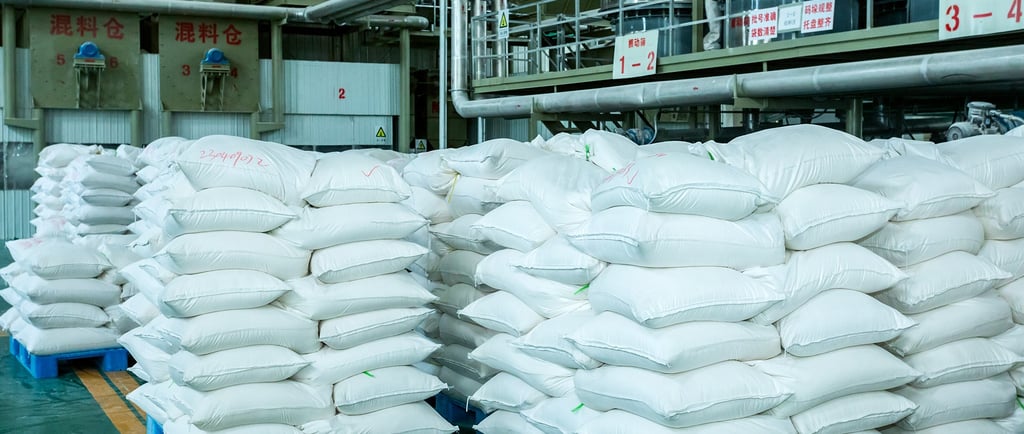What is HPMC
How to understand the HPMC
6/29/20253 min read


HPMC (Hydroxypropyl Methyl Cellulose) is a common cellulose derivative with unique physical and chemical properties and a wide range of application scenarios. The following is a detailed introduction from multiple dimensions:
I. Chemical Structure and Properties
1. Molecular Structure
Derived from natural cellulose (such as cotton linters or wood pulp) through chemical modification, formed by substitution reactions of hydroxyl groups (-OH) with methyl (-CH₃) and hydroxypropyl (-CH₂CH(OH)CH₃) groups.
The type and quantity of substituents (i.e., degree of substitution) determine key properties such as solubility and viscosity.
2. Physicochemical Characteristics
Appearance: White or off-white powder, odorless and tasteless, soluble in water and some organic solvents.
Solubility:
Soluble in cold water (disperses in cold water to form a transparent colloidal solution; solubility decreases in hot water, causing gelation and precipitation).
Insoluble in anhydrous ethanol, diethyl ether, etc., but soluble in ethanol-water mixed solutions.
Viscosity Characteristics: Aqueous solution viscosity varies with concentration, temperature, and molecular weight. Higher molecular weight generally leads to higher viscosity; viscosity decreases with temperature rise (thermal gelation property).
Film-Forming Property: Forms a flexible, transparent film after drying, with good adhesion and oil resistance.
II. Production Process
Raw Material Pretreatment: Cellulose (e.g., cotton linter, wood pulp) is crushed and treated with lye to generate alkali cellulose.
Etherification Reaction: Alkali cellulose undergoes etherification with chloromethane and propylene oxide under pressure to introduce methyl and hydroxypropyl groups.
Neutralization and Washing: Excess alkali is neutralized with acid, followed by washing, drying, and pulverizing to obtain HPMC.
III. Application Fields
HPMC is widely used in the following industries due to its excellent thickening, water retention, film-forming, and adhesive properties:
1. Construction Industry
Mortar Additive:
Improves mortar water retention, prevents rapid water loss, and enhances workability (e.g., tile adhesive, putty powder, plastering mortar).
Enhances mortar adhesion, reducing cracking and hollowing.
Concrete Additive:Regulates cement hydration rate, improves concrete workability, used in waterproof coatings or repair materials.
2. Pharmaceutical Industry
Pharmaceutical Excipient:
Sustained-Release Material:Coats drugs to form a gel skeleton, controlling drug release rate (e.g., oral sustained-release tablets).
Binder:Used in tablet granulation to improve compressibility and formability.
Film Coating Material:Forms a moisture-proof and light-proof film to improve drug stability.
Ophthalmic Drugs:Acts as a thickener for artificial tears, prolonging drug retention on the ocular surface.
3. Food Industry
Food Additive:
Thickener:Used in jams, yogurt, ice cream to improve texture and taste.
Stabilizer:Prevents water loss in baked goods (e.g., cakes, bread) and extends shelf life.
Film Former:Produces edible packaging films (e.g., candy coatings) with moisture-proof and fresh-keeping effects.
Compliance:Meets food additive standards of FDA, EU EFSA, etc. (e.g., E464 code).
4. Daily Chemicals and Cosmetics
Toothpaste:As a thickener and binder to maintain paste stability and improve brushing feel.
Skin Care Products:Regulates viscosity in lotions and creams, enhances skin feel, or serves as a film-forming matrix for masks.
Shampoo:Increases system consistency and improves smoothness during use.
5. Other Fields
Petroleum Industry:As a thickener and fluid loss agent for drilling fluids to stabilize wellbore.
Agriculture:Used for seed coating to retain moisture and promote germination; or as a sustained-release carrier for pesticides and fertilizers.
Coating Industry:Improves paint viscosity and leveling, prevents pigment sedimentation, commonly used in water-based coatings.
IV. Classification and Models
HPMC models are typically divided by the following indicators:
Degree of Substitution (DS):Substitution degree of methyl and hydroxypropyl groups, affecting solubility and temperature resistance. For example:
High methyl substitution degree (DS=1.8–2.0): Good cold water solubility, higher thermal gelation temperature.
Viscosity (mPa·s):Expressed by the viscosity of a 2% aqueous solution at 20℃, ranging from 50 to 200,000 mPa·s. Low-viscosity models (e.g., 50–1,000 mPa·s) are mostly used in food and medicine, while high-viscosity (10,000–200,000 mPa·s) for construction mortars.
V. Safety and Environmental Protection
Safety:Non-toxic, non-irritating, not digested or absorbed by the human body, safe for use as food and pharmaceutical excipients.
Environmental Friendliness:Derived from natural cellulose, biodegradable, environmentally friendly, and in line with sustainable development needs.
VI. Market and Competitive Landscape
Global Market:Continuously growing, with a market value of approximately $2.5 billion in 2023, expected to exceed $3.5 billion by 2030, at a CAGR of about 5%–6%.
Major Production Regions:China is the world's largest producer (accounting for over 60%), mainly in Shandong, Hebei, Henan, etc.; overseas companies like Dow (US) and Wacker (Germany) dominate the high-end market (e.g., pharmaceutical and food-grade products).
VII. Comparison with Other Cellulose Derivatives
MaterialHPMCMC (Methyl Cellulose)CMC (Carboxymethyl Cellulose)SolubilityCold water soluble, hot water gelsCold water soluble, lower thermal gelation temperatureCold water soluble, stable in hot waterSalt ResistanceGoodGeneralPoor (prone to precipitation in high-concentration salt solutions)Application FocusConstruction, medicine, foodCoatings, ceramicsDetergents, food, petroleum drilling
Conclusion
HPMC plays an important role in industry and daily life due to its natural origin, excellent physicochemical properties, and wide applicability. With the increasing demand for green materials, its applications in eco-friendly building materials, biodegradable packaging, and other fields will further expand, releasing continuous market potential.